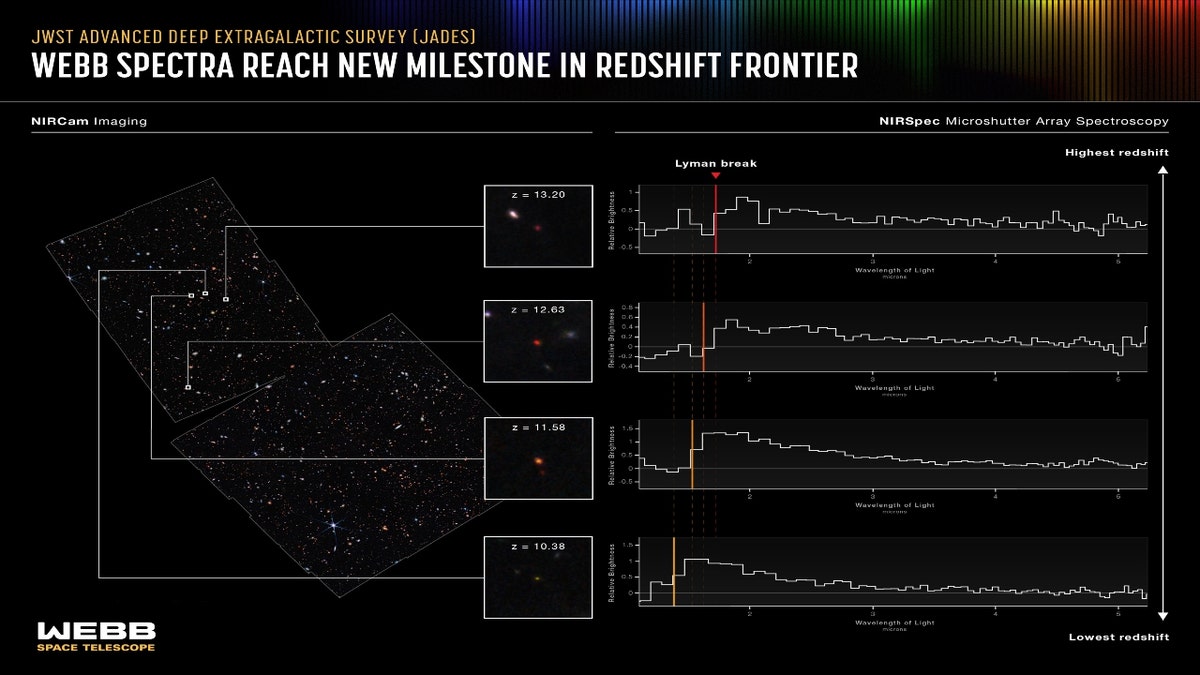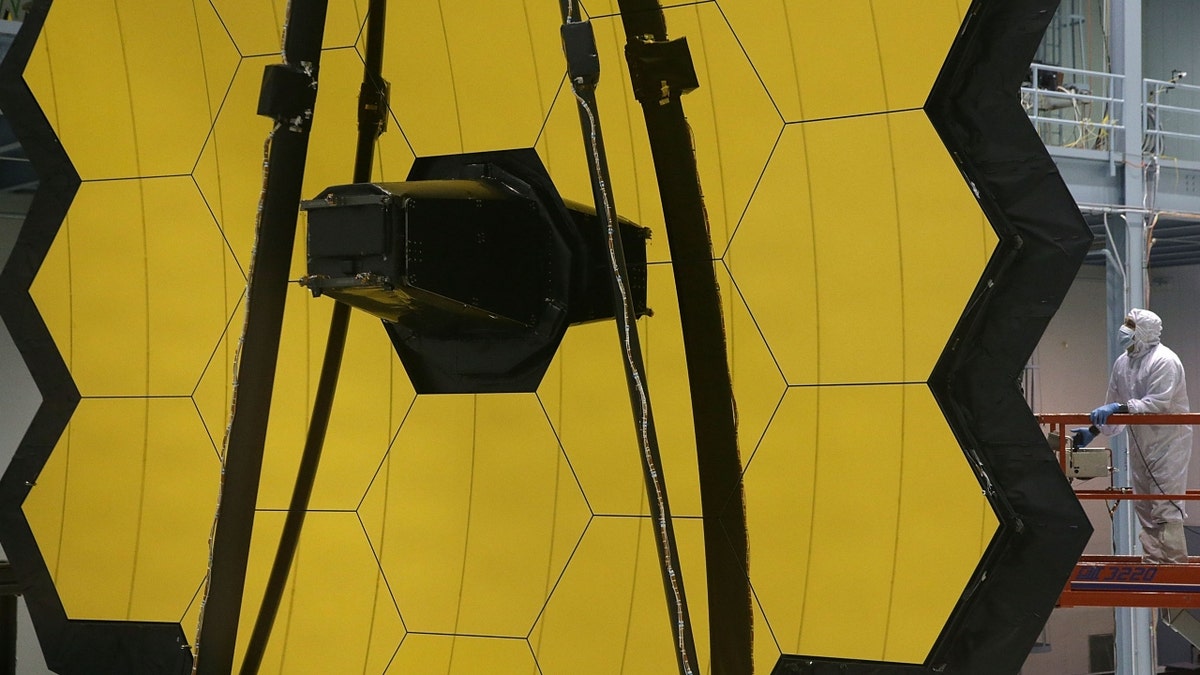Webb Space Telescope allows us to 'look into the past': Theoretical physicist
Theoretical physicist Dr. Michio Kaku explains the significance of new images provided by NASA's Webb Space Telescope on 'Sunday Night in America.'
Using NASA's James Webb Space Telescope, an international team of astronomers has discovered the earliest galaxies confirmed to date.
The light from the galaxies, per a European Space Agency release, said light from the galaxies has taken more than 13.4 billion years to reach Earth.
The galaxies date back to less than 400 million years after the big bang — a time when the universe was just 2% of its current age.
The release notes that earlier data from the observatory had provided candidates for such infant galaxies. The post highlights data from Webb science in progress, which has not yet been through the peer-review process.
WHO ARE THE ARTEMIS II ASTRONAUTS?

At left is a NIRCam image of the field, which is filled with galaxies of different colors, shapes, and sizes. To the right are four line graphs corresponding to four highlighted galaxies. They show the shift in the position of a spectral feature called the Lyman break to longer wavelengths as the redshift increases. (NASA, ESA, CSA, M. Zamani (ESA/Webb), Leah Hustak (STScI), Brant Robertson (UC Santa Cruz), S. Tacchella (Cambridge), E. Curtis-Lake (UOH), S. Carniani (Scuola Normale Superiore), JADES Collaboration)
Now, the agency said, the targets have been confirmed by spectroscopic observations. Those observations had revealed "characteristic and distinctive patterns in the fingerprints of light" emitted by the faint galaxies.
The findings resulted from the collaboration of scientists who led the development of Webb's NIRCam(Near-Infrared Camera) and NIRSpec (Near-Infrared Spectrograph) instruments. The motivation for these instruments was the investigation of the faintest and earliest galaxies and, in 2015, the instrument teams joined forces to propose the James Webb Space Telescope Advanced Deep Extragalactic Survey (JADES).
JADES, which has been allocated just over one month of the telescope’s time over a period two years, is designed to provide an unprecedented view of the early universe. The first round of its observations honed in on the area around the Hubble Space Telescope's Ultra Deep Field.
NEIL DEGRASSE TYSON SAYS JAMES WEBB SPACE TELESCOPE IS WINDOW TO UNIVERSE 'NEVER BEFORE ACHIEVED'

A technician stands next to the James Webb Space Telescope during assembly November 2, 2016, at NASA's Goddard Space Flight Center in Greenbelt, Maryland. (Alex Wong/Getty Images)
"These results are the culmination of why the NIRCam and NIRSpec teams joined together to execute this observing program," co-author Marcia Rieke, NIRCam principal investigator from the University of Arizona, said in a statement.
The JADES program used NIRCam to observe the field over 10 days of mission time and in nine different infrared colors. They searched for faint galaxies that are visible in the infrared but whose light abruptly cuts off at a critical wavelength. The location of the cutoff within each galaxy’s spectrum is shifted due to the universe’s expansion. Next, they used the NIRSPec instrument for three days and collected the light from 250 faint galaxies, allowing for a precise measure of each galaxy's redshift and the properties of the gas and stars in them.

A presenter gives a speech about the Webb Space Telescope at South by Southwest Conference and Festivals in Austin, Texas, on March 11, 2023. (Bo Lee/Xinhua via Getty Images)
The redshift is stretching of early universe light due to the expansion of the universe. It can be used as a measure of distance, with early galaxies displaying extreme redshifts.
Four of the galaxies were revealed to be at an unprecedentedly early epoch, lying at redshifts above 10 — including two at 13.
CLICK HERE TO GET THE FOX NEWS APP
That corresponds to a time when the universe was approximately 330 million years old. The researcher first reported the results in December of last year and two research papers were published Tuesday in the journal Nature.
JADES will continue to study another field in 2023 before returning to the Ultra Deep Field for another round of deep imaging and spectroscopy.


